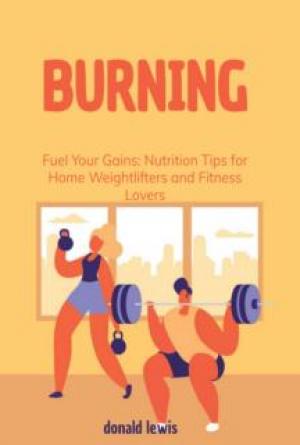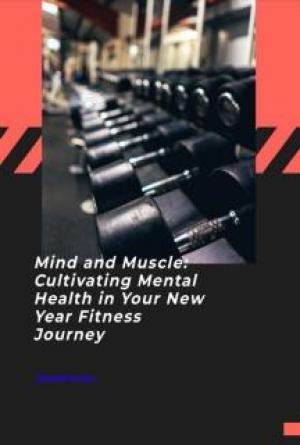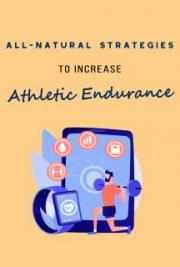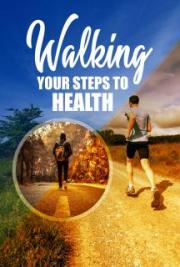A Basic Guide to Diet and Nutrition
An Affiliate Of:
The Diet Solution Program

 Brought To You By:
Brought To You By:
CONSUMERS INFO USA
 809 Aberdeen Rd Drawer 9001
809 Aberdeen Rd Drawer 9001
Hampton VA 23670

Why Can’t I Lose Weight
A Basic Guide to Diet & Nutrition
As with all information distributed via the internet; the very first thing we must do is give the required disclaimers:
What you have received is information. It is intended for informational purposes only. The goal of this eBook guide is simply to educate.
Nationwide the statistics are absolutely clear that many people simply have never been taught the very basics of diet, and nutrition, and the overall roll it plays in your daily food consumption.
It is because of this lack of knowledge that many people fail to achieve their weight goals.
That is the purpose of this eBook guide. It is only intended to educate on the basics of diet and nutrition.
Please understand that Consumers Info USA is not a Counseling Service, or a Diet Advisory Company.
This information is not intended as professional advice. We encourage you to consult with established professionals in your local area if needed.
The opinions and information contained in this guide are based on many years of experience and will apply to many situations. However individual circumstances can vary which may make some of the information contained in this guide inapplicable to your own particular situation.
The information on this subject matter may not fit your own individual circumstances.
Consumers Info USA can not be held responsible in any way, and will be held harmless from, any decisions made by the reader based solely on the information on this guide.
The bottom line is that everybody’s situation is different, which means the information in this eBook guide may not work for you.
However, the most important thing is that you will never know unless you make the effort to educate yourself and then put the information in to practice.
Thank You Sincerely
A Basic Guide to Diet and Nutrition Table of Contents
WHAT IS A DIET?

Like many words in the English language, the word diet is often used interchangeably when people are referring to completely different things.
In simple terms... your diet is what you eat. What foods you eat and how much of them you eat. By definition, "diet" refers to what a person eats or drinks during the course of a day.
However... the word is also commonly used when referring to a controlled eating plan specifically for the purpose of loosing weight. This is when you commonly hear words like: “I’m on a diet” “I didn’t stick to my diet” “I’m going off my diet” etc.
When it is used in this way, the word diet is viewed almost the same as other four letter words. But the bottom line is that anything you eat is your diet.
If you eat in quantities that are too large, you will take in too many calories and will gain weight.
However, if you eat what’s considered “the right amount of calories” for you, but you get them from only one food group, you will lack essential nutrients which may cause health problems.
A diet that limits portions to very small sizes, or that excludes certain foods; entirely to promote weight loss may not be effective over the long term. You are likely to miss certain foods and find it difficult to follow this for a long time.
Instead, it is considered better to gradually change the types and amounts of food you eat and maintain these changes for the rest of your life.
The ideal diet is one that takes into account your likes and dislikes and includes a wide variety of foods with enough calories and nutrients for good health.
How much you eat and what you eat play a major role in how much you weigh. A healthy diet is one that helps maintain or improve health. It is important for lowering many chronic health risks, such as obesity, heart disease, diabetes, hypertension, cancer, etc.
A healthy diet involves consuming appropriate amounts of all essential nutrients and an adequate amount of water. Nutrients can be obtained from many different foods.
A healthy diet needs to have a balance of macronutrients (fats, proteins, and carbohydrates), calories to support energy needs, and micronutrients to meet the needs for human nutrition without inducing toxicity or excessive weight gain from consuming excessive amounts.
But that is the question that eludes everyone. What is a healthy diet?
And even though we hear these terms on a daily basis, what is nutrition? What are calories? What is fat? What are carbohydrates? Etc.
It is these most basic and fundamental things that we all hear about frequently. But few of us truly understand what they are and what role each plays in your overall diet.
Once you learn these basics, it will affect the choices that you make on a daily basis. And that will significantly improve you being able to reach your weight loss goals.
Learning the definitions of these basic fundamental terms is the purpose of this eBook guide.
WHAT IS NUTRITION?

Nutrition, nourishment, or aliment, is the supply of materials - food - required by organisms and cells to stay alive. In science and human medicine, nutrition is the science or practice of consuming and utilizing foods.
In hospitals, nutrition may refer to the food requirements of patients, including nutritional solutions delivered via an IV (intravenous) or IG (intragastric) tube.
Nutritional science studies how the body breaks food down (catabolism) and repairs and creates cells and tissue (anabolism) - catabolism and anabolism = metabolism. Nutritional science also examines how the body responds to food. In other words, "nutritional science investigates the metabolic and physiological responses of the body to diet".
As molecular biology, biochemistry and genetics advance, nutrition has become more focused on the steps of biochemical sequences through which substances inside us and other living organisms are transformed from one form to another metabolism and metabolic pathways.
Nutrition also focuses on how diseases, conditions and problems can be prevented or lessened with a healthy diet.
Nutrition also involves identifying how certain diseases, conditions or problems may be caused by dietary factors, such as poor diet (malnutrition), food allergies, metabolic diseases, etc.
What is Metabolism?

Many people claim that they cannot lose weight because they have a slow metabolism and are constantly looking for ways to boost their metabolism. A lot of these people do not truly understand the term metabolism. According to Wikipedia:
“Metabolism is a set of chemical reactions that occur in living organisms in order to maintain life”
Metabolism allows our bodies to utilize the food and some other resources that are needed to maintain the functions of the body, to repair damage, get rid of toxins, and heal injury. It is really an essential process in living organisms, particularly in humans. Without this process, we would die.
In humans the food we eat fuels these chemical reactions. So when people refer to a fast or slow metabolism they are generally referring to the average amount of calories their body burns in a day.
Food is the most important instrument that will help you either lose/gain weight, considering that metabolism needs the energy from what you eat. Chemical reactions take place within the body's cells that convert fuel from the consumed food, ultimately into energy to do everyday functions like thinking, growth, household/work activities and so on. Without metabolism, cells wouldn't be kept healthy and functioning.
Enzymes break down proteins from food present in the digestive system. These are then converted into amino acids, fatty acids, carbohydrates and sugar. These are then absorbed into the blood, namely amino and fatty acids, making their way into the cells. Other enzymes then actively control the chemical reactions thus metabolizing the compounds that are the result of the process.
Metabolism Kinds
There are two kinds of metabolism, namely catabolism and anabolism.
Catabolism
Also known as destructive metabolism, catabolism produces energy to make the cells active. Carbohydrates and fats are broken down to produce energy. This energy is then released to provide fuel for anabolism (read below). This in turn increases temperature within the body, making muscles contract in being able make body parts move. Complex chemical units are converted into simple matter
- like waste through the skin, lungs and kidneys.
Anabolism
Also known as constructive metabolism, anabolism caters to storing and building. New cells are then formed and energy is stored for later use. This is then converted to large molecules of protein, carbohydrates and fats.
Now you must have understood what is metabolism and why is it important. There are many reasons that stunt one's ability to lose weight like genetics, problems like hyperthyroidism, type 1 and 2 diabetes and so on. Make a point to check your family history, to gage whether you have problems that hinder the way your body functions. Consult a doctor now if you're unsure of why multiple diet plans and workouts fail to bear fruit for you.
Foods/Habits That Rev Up Metabolism
As a kid you may have been pestered day in and day out to drink lots of water. Dietitians say that drinking at least 6 - 8 glasses of water a day can improve not only health, but repair other problems like bad skin (oily/dry/acne prone), hair, increase metabolism, regular bowel movements, cleansing of bodily toxins and so on. Follow this regime, and see a considerable change in body mass and structure.
• Eat fruits and vegetables (because of high fiber content), as these are foods that boost metabolism.
• Walk long distances for at least a total of 30 minutes in a day (jog every now and then to boost metabolism, stick to walking if too tiresome).
• Drink green tea (known to contain a considerable amount of calorie burning properties).
• Increase protein intake like fish, white meat (chicken), cereal (fat free).
• Occasionally eat spicy food (throw in some hot spices to boost your metabolic rate).
• Substitute regular coffee with black coffee (avoid using cream, sugar or milk).
• Constantly munch on something healthy like nuts (small helpings of peanuts, almonds, groundnuts and cashews - switch to pine nuts, salt free pistachios if you'd like; strictly avoiding wafers/biscuits).
• Make it a habit to opt for the stairs instead of the elevator.
• Avoid starch and sugar carbohydrates like white bread, sugary items, candy, aerated drinks, potatoes (fried/boiled), pasta and so on (try eating these items during the weekends instead of everyday).
• Eat a good breakfast and lunch; go easy on dinner (make sure you eat two hours before you head to bed, to avoid food from sitting overnight in your belly, causing it to bloat).
• Most importantly, avoid starving yourself.
TOP
WHAT ARE VITAMINS?

Vitamins are organic compounds which are needed in small quantities to sustain life. We get vitamins from food, because the human body either does not produce enough of them or none at all. An organic compound contains carbon. When an organism (living thing) cannot produce enough of an organic chemical compound that it needs in tiny amounts, and has to get it from food, it is called a vitamin.
Sometimes the compound is a vitamin for a human but not for some other animals. For example, vitamin C (ascorbic acid) is a vitamin for humans but not for dogs, because dogs can produce (synthesize) enough for their own needs, while humans cannot.
Put simply, a vitamin is both:
• An organic compound (contains carbon).
• An essential nutrient the body cannot produce enough of on its own, so it has to get it (tiny a mounts) from food.
There are currently 13 recognized vitamins.
•
Vitamin A
Chemical names (vitaminer) - retinol, retinal, and four carotenoids (including beta carotene).
Fat soluble.
Deficiency may cause night-blindness and keratomalacia (eye disorder that results in a dry cornea)
Good sources - liver, cod liver oil, carrot, broccoli, sweet potato, butter, kale, spinach, pumpkin, collard greens, some cheeses, egg, apricot, cantaloupe melon, milk.
•
Vitamin B1.
Chemical name (vitaminer) - thiamine
Water soluble.
Deficiency may cause beriberi, Wernicke-Korsakoffsyndrome Good sources - yeast, pork, cereal grains, sunflower seeds, brown rice, whole grain rye, asparagus, kale, cauliflower, potatoes, oranges, liver, and eggs.
•
Vitamin B2.
Chemical name (vitaminer) - roboflavin
Water soluble.
Deficiency may cause ariboflavinosis
Good sources - asparagus, bananas, persimmons, okra, chard, cottage cheese, milk, yogurt, meat, eggs, fish, and green beans.
•
Vitamin B3.
Chemical names (vitaminer) - niacin, niacinamide Water soluble. Deficiency may cause pellagra
Good sources - liver, heart, kidney, chicken, beef, fish (tuna, salmon), milk, eggs, avocados, dates, tomatoes, leafy vegetables, broccoli, carrots, sweet potatoes, asparagus, nuts, whole grains, legumes, mushrooms, and brewer's yeast.
•
Vitamin B5.
Chemical name (vitaminer) - pantothenic acid
Water soluble.
Deficiency may cause paresthesia
Good sources - meats, whole grains (milling may remove it), broccoli, avocados, royal jelly, fish ovaries.
•
Vitamin B6.
Chemical names (vitaminer) - pyridoxine, pyridoxamine, pyridoxal Water soluble.
Deficiency may cause anemia, peripheral neuropathy
Good sources - meats, bananas, whole grains, vegetables, and nuts. When milk is dried it loses about half of its B6. Freezing and canning can also reduce content.
•
Vitamin B7.
Chemical name (vitaminer) - biotin
Water soluble.
Deficiency may cause dermatitis, enteritis Good sources - egg yolk, liver, some vegetables.
•
Vitamin B9.
Chemical names (vitaminer) - folic acid, folinic acid Water soluble.
Deficiency may cause pregnancy deficiency linked to birth defects Good sources - leafy vegetables, legumes, liver, baker's yeast, some fortified grain products, sunflower seeds. Several fruits have moderate amounts, as does beer.
•
Vitamin B12.
Chemical names (vitaminer) - cyanocobalamin, hydroxycobalamin, methylcobalamin
Water soluble.
Deficiency may cause megaloblastic anemia
Good sources - fish, shellfish, meat, poultry, eggs, milk, and dairy products. Some fortified cereals and soy products, as well as fortified nutritional yeast.
•
Vitamin C.
Chemical names (vitaminer) - ascorbic acid
Water soluble.
Deficiency may cause megaloblastic anemia
Good sources - fruit and vegetables. The Kakadu plum and the camu camu fruit have the highest vitamin C contents of all foods. Liver also has vitamin C.
•
Vitamin D.
Chemical names (vitaminer) - ergocalciferol, cholecalciferol Fat soluble.
Deficiency may cause rickets, osteomalacia
Good sources - produced in the skin after exposure to ultraviolet B light from the sun or artificial sources. Found in fatty fish, eggs, beef liver, and mushrooms.
•
Vitamin E.
Chemical names (vitaminer) - tocopherols, tocotrienols
Fat soluble.
Deficiency is uncommon. May cause mild hemolytic anemia in newborns Good sources - kiwi fruit, almonds, avocado, eggs, milk, nuts, leafy green vegetables, unheated vegetable oils, wheat germ, and wholegrains.
•
Vitamin K.
Chemical names (vitaminer) - phylloquinone, menaquinones Fat soluble.
Deficiency may cause bleeding diathesis
Good sources - leafy green vegetables, avocado, kiwi fruit. Parsley contains a lot of vitamin K.
Fat soluble and water soluble vitamins
There are fat-soluble and water-soluble vitamins. Fat-soluble vitamins are stored in the fat tissues of our bodies, as well as the liver. Fat-soluble vitamins are easier to store than water-soluble ones, and can stay in the body as reserves for days, some of them for months.
Water-soluble vitamins do not get stored in the body for long - they soon get expelled through urine.
Water-soluble vitamins need to be replaced more often than fat-soluble ones.
Vitamins A, D, E and K are fat-soluble.
Vitamins C and all the B vitamins are water-soluble.
Fat-soluble vitamins are absorbed through the intestinal tract with the help of fats (lipids).
TOP
WHAT ARE MINERALS?

As important as vitamins are, they can do nothing for you without minerals. Vitamins cannot be assimilated without the aid of minerals. Although the body can manufacture a few vitamins, it cannot manufacture a single mineral. All tissue and internal fluids contain varying quantities of minerals. Minerals are constituents of the bones, teeth, soft tissue, muscle, blood, and nerve cells. They are vital to overall mental and physical well-being.
HOW THEY WORK: Minerals act as catalysts for many biological reactions within the body, including, muscle response, the transmission of messages through the nervous system, and the utilization of nutrients in food.
Just like vitamins, minerals help your body grow, develop, and stay healthy. The body uses minerals to perform many different functions — from building strong bones to transmitting nerve impulses. Some minerals are even used to make hormones or maintain a normal heartbeat.
Macro and Trace
Whereas vitamins are organic substances (made by plants or animals), minerals are inorganic elements that come from the soil and water and are absorbed by plants or eaten by animals. Your body needs larger amounts of some minerals, such as calcium, to grow and stay healthy. Other minerals like chromium, copper, iodine, iron, selenium, and zinc are called trace minerals because you only need very small amounts of them each day.
The two kinds of minerals are: macrominerals and trace minerals. Macro means "large" in Greek (and your body needs larger amounts of macrominerals than trace minerals). The macromineral group is made up of calcium, phosphorus, magnesium, sodium, potassium, chloride, and sulfur.
A trace of something means that there is only a little of it. So even though your body needs trace minerals, it needs just a tiny bit of each one. Scientists aren't even sure how much of these minerals you need each day. Trace minerals includes iron, manganese, copper, iodine, zinc, cobalt, fluoride, and selenium.
TOP
Summary Table
The following table (in alphabetical order within categories) includes basic information about some of the major minerals used by the human body.
Mineral Functions Sources
Signs of Deficiencies
Signs of Excessive Intake
Macro Minerals:
Calcium
Key constituent of
(Ca)
bones and teeth; Essential for vital metabolic processes such as nerve function, muscle contraction, and blood clotting.
Dairy Produce Deficiency (or
insufficient uptake) may lead to:
Osteomalacia;
Osteoporosis;
Rickets;
Tetany.
Formation of "stones" in the body,
especially the Gall Bladder and the
Kidneys.
Iron (Fe)
Essential for transfer of oxygen between tissues in the body; Blood (e.g. "Black Pudding");
Eggs;
Green (leafy)
vegetables; Fortified foods (e.g. cereals, white flour);
Liver; Meat;
Nuts; Offal;
Peas; Whole grains. Deficiency may lead to:
Anaemia;
Increased
susceptibility to
infections.
Long-term excessive intake of iron can lead to:
Haemochromatosis or Haemosiderosis
(involving organ
damage), and both of which are rare;
Insufficient calcium and magnesium in the body (because these minerals
compete with each other for absorption); Increased
susceptibility to
infectious diseases.
Magnesium
Essential for healthy
(Mg)
bones;
Functioning of muscle & nervous tissue;
Needed for
functioning of approx. 90 enzymes. Eggs;
Green leafy
vegetables;
Fish (esp. shellfish); Milk (and dairy
products);
Nuts;
Wholemeal flour. Deficiency can occur gradually, leading to: Anxiety; Fatigue; Insomnia; Muscular problems; Nausea; Premenstrual
problems.
The most extreme cases of deficiency may be associated with arrhythmia.
Unusual.
Phosphorous
Constituent of bone
(P)
tissue;
Forms compounds needed for energy conversion reactions (e.g. adenosine Dairy products;
Fruits (most fruits); Meat;
Pulses;
Vegetables(esp.leafy green ).
Insufficient
phosphorous may lead to:
Anaemia;
Demineralization of bones;
Excess phosphorous can interfere with the body's absorption of: calcium, iron,
magnesium, and zinc.
triphosphate - ATP). Nerve disorders;
Respiratory
problems;
Weakness;
Weight Loss.
Potassium (K)
Main base ion of
intracellular fluid; Necessary to
maintain electrical potentials of the
nervous system and so functioning of muscle and nerve tissues.
Cereals;
Coffee;
Fresh Fruits;
Meat;
Salt-subsitutes; Vegetables;
Whole-grain flour. Insufficient
potassium in the body may lead to: General muscle paralysis;
Metabolic
disturbances.
Excessive amounts in the body (whether due to intake or other causes) may lead to: Arrhythmia, and
ul








 Like many words in the English language, the word diet is often used interchangeably when people are referring to completely different things.
Like many words in the English language, the word diet is often used interchangeably when people are referring to completely different things. 






